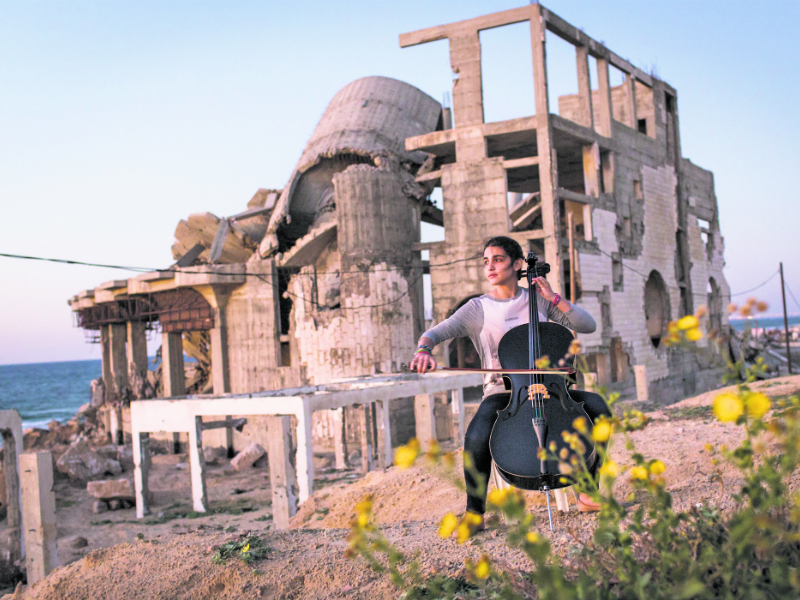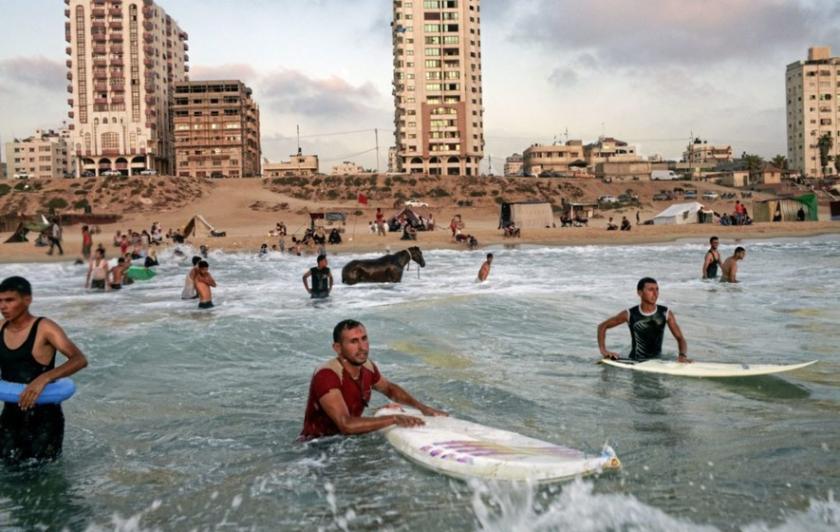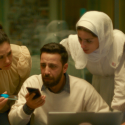First-time collaborators Garry Keane and Andrew McConnell have tried to divert from the standard media narrative by looking at Gaza from the viewpoint of its inhabitants. The result is an observant documentary that attempts to avoid politics by collecting first-hand portraits, or what the directors call a “tapestry of characters”. Honesty, candour and hope abound, but hostility is never far away.
There is a free-floating and casual mood to this film. The creators’ mission is clear: to sit back and let the people speak. For most of the film, we witness the ordinary, often mundane details of everyday life in the 25-mile long settlement. We glide past lively street market scenes, beach activities, fishing boats and card tables. The mischief and adventure of young children can be heard in the background. But tension always looms in the form of rifled guards, a waving Hamas flag or a distant rocket flare. The film’s production certainly involved tensions. Keane and McConnell were filming in Gaza when the conflict of May 14 2018 erupted, in which 60 protestors were killed. The directors accumulate an impressive cross-section of life. We meet a cab driver, a fashion designer, a theatre director, a lifeguard, and a 14-year-old boy, all vastly different and yet bound by the cruelty of historical chance. The people talk openly about their interests and dreams. Keane and McConnell capture the human frustrations borne by political imbecility. Everyone feels stifled by debt, shortages and war. A local tailor can only operate his sewing machines for four hours a day due to electricity cuts. A dressmaker is forced to decline overseas invitations to exhibit her work. Whilst the interviews evoke great sympathy, the “characters” here do not to want merely to be pitied. They want their stories to help create change.
The directors accumulate an impressive cross-section of life. We meet a cab driver, a fashion designer, a theatre director, a lifeguard, and a 14-year-old boy, all vastly different and yet bound by the cruelty of historical chance. The people talk openly about their interests and dreams. Keane and McConnell capture the human frustrations borne by political imbecility. Everyone feels stifled by debt, shortages and war. A local tailor can only operate his sewing machines for four hours a day due to electricity cuts. A dressmaker is forced to decline overseas invitations to exhibit her work. Whilst the interviews evoke great sympathy, the “characters” here do not to want merely to be pitied. They want their stories to help create change.
In the film’s final third, there is a sharp turn. The focus shifts from the intimate interview format to more general, fractured footage of conflict at the borders. Victims are carried to ambulances. Family members weep among chaotic crowds. A man crouches in the rubble of what must have been his home. These are compelling images, but tonally it is difficult to reconcile with the calm, observant mood of the film’s prior interview-portraits.
However, the film’s central mission holds out, as we are returned to the suffering of the inhabitants and their strength and dignity in the face of turmoil. “When will it end?” wonders Karma, a law student who aspires to win a scholarship to study overseas. No one can know. Only hope, we are shown, can allow the people of Gaza to abide uncertainty.















Add comment